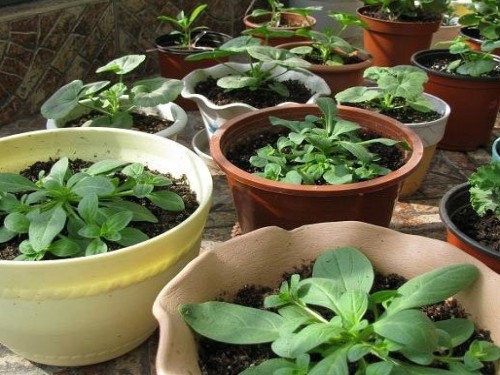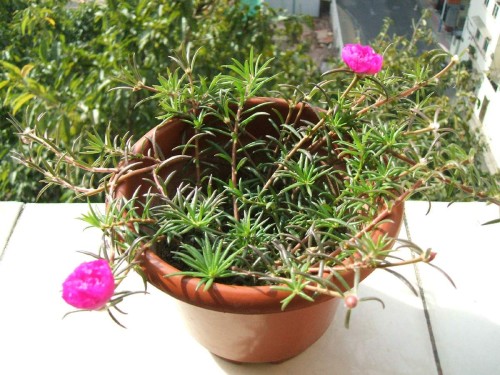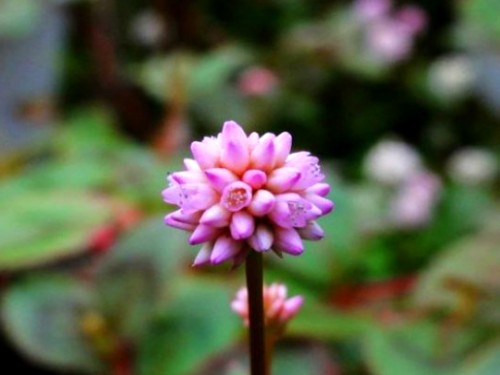Planting method of potted Petunia in Family
When it comes to Petunia, I'm sure many flower friends know that it has many names, such as Bidong eggplant, hybrid bangyu Chaoyan, Ganoderma lucidum peony, shuttlecock flower, short trumpet, sweet potato flower, and bangyu Chaoyan. It is a perennial herb and is often cultivated one or two years. But flower friends may not know the planting method of petunia. Petunia can be said to be the king of grass flowers. Petunia is almost a necessary species for flower friends. indeed, petunia is a good species and easy to produce effects. it not only has a full range of flowers and colors, but also has a large number of flowers, blossoms constantly, and is not afraid of cold and heat. The planting method of petunia is actually very simple, please take a look:

Like warm and sunny environment, not resistant to frost, afraid of rain and waterlogging. The suitable temperature for its growth is 13-18 ℃, and the winter temperature is 4-10 ℃. If the temperature is lower than 4 ℃, the plant growth stops. It can withstand high temperature of more than 35 ℃ in summer. During the peak growth period in summer, sufficient water is needed, especially in the summer high temperature season, it should be watered in the morning and late to keep the basin soil moist.
Sowing: this autumn sowing mixed with light waves, 5 out of 4, bel canto ice lilac 5 out of 4. Using soil to sow soil with carbon mud, you can appropriately add a little perlite and vermiculite to increase air permeability, otherwise the water retention of carbon mud is too good, it is easy to cover the seedlings yellow. Dwarf cattle need light to germinate. Just put them on the south-facing windowsill where they will not be exposed to direct sunlight at noon. Remember that there should be enough water in the nursery box to maintain 100% humidity.
Lighting and watering: dwarfs love to drink water, and when they are full, they are not afraid of the sun! But remember to bask in the sun! If you don't get enough sun, you have to test your topping skills if you want to become a bouquet. When you sow in autumn, the four true leaves of the dwarf can be illuminated all day long, and the premise is still enough water. My practice is to throw it directly on the terrace from the very beginning of germination, but after all, the temperature in autumn is not high. And always keep enough water in the bottom box of the box.
Fertilization: petunia likes fertilizer, and there is a big difference between using fertilizer or not. My experience is that after 4 true leaves are produced, to the stage of pseudo-planting (the small grid of the nursery box is full of roots), 2000 times of Biwang is fertilized once a week. From pseudo-planting to colonization stage, 1500 times of Biwang is fertilized once a week, and a little slow-release fertilizer can be added appropriately when pseudo-planting. When planting to the full stage, Biwang was fertilized 1000 to 1500 times twice a week (the concentration increased with the plant size). Add sufficient base fertilizer when planting. When the bud is in full bloom, Biwang will blossom 1000 times and apply fertilizer twice a week. Sometimes dwarfs are short of iron, so you can add some ferrous sulfate.
Hit the top and use the basin: to become a bouquet, you must hit the top! As for how to fight, in the words of the cat, it is: cut it along the edge of the basin! Don't be soft, don't be distressed, click decisively! Reluctant to bear the child can not bear the wolf, the specific implementation of the top or to see the cat God paste, I think I have not yet completely started …... Do you use a pot? it's always right to 20cm-25cm one pot at a time.
In daily management, we should do the following:
The basin should be slightly too permeable, and the soil should be loose and slightly acidic. Petunia should be planted in clay pots with good permeability and inner diameter of 20 cm to 30 cm, with two or three plants in each basin. If planted in purple sand basin, plastic basin and porcelain basin with poor permeability, petunia can be planted with a layer of broken charcoal or hard plastic foam at the bottom of the basin to enhance air permeability and drainage and prevent rotting roots.
It can also be planted in a plastic hanging basin (1 plant in each basin) and hung on the balcony or window. It is best to use loose and fertile slightly acidic sandy loam. Rotten leaf soil, vegetable garden topsoil, sand or perlite can be used to prepare the culture soil at the ratio of 5:4:1. The best PH value is between 5.8and 6.6. it will inhibit the absorption of iron by roots and lead to leaf yellowing. Avoid heavy clay and hydrochloric acid soil.
Watering moderately prevent drought and waterlogging, fertilize more phosphorus and potassium and use less nitrogen. Petunia likes to be wet and afraid of drought and waterlogging. It should be often watered in spring, summer and autumn, and it is better to keep the soil slightly moist when the pot soil is dry, but never waterlogging, too wet and rotting roots, too dry leaves are easy to yellow, and basin soil is not dry and slightly moist in winter. When watering in the north, it is advisable to add some ferrous sulfate (500glucon1) to the water to prevent long-term application with alkaline water, basinization of basin soil and poor growth of leaf yellow.
Petunia like fertilizer, but also tolerate barren, such as too much fertilization too often, easy to grow and spend less. When planting or turning the basin to change the soil, you can add some bone powder or nitrogen, phosphorus and potassium compound fertilizer as the base fertilizer in the culture soil, apply a light nitrogen fertilizer about 10 days in the seedling stage, and no more nitrogen fertilizer in the bud flowering stage, otherwise it is easy to grow and lodge, and the leaves have more flowers. It is appropriate to apply nitrogen, phosphorus and potassium compound fertilizer, which is sprayed on the leaf surface once a month once a month. 0.2% potassium dihydrogen phosphate solution is sprayed to the leaf surface once a month to promote its multi-pregnant buds, flowers are more and more beautiful, and no fertilizer is applied in winter.
There is plenty of sunshine and luxuriant flowers, and there is more light when you enter the house in winter. Petunia likes light, warmth and is not resistant to cold. The most suitable growth temperature is 15 ℃ to 25 ℃, except for the midsummer high temperature (more than 34 ℃) at noon, the sun should be seen more in other seasons, and the more sunshine, the more luxuriant the growth, the more flowers, should be placed in the sunny courtyard, roof garden, south or west balcony, windowsill.
Time: 2019-05-25 Click:
- Prev

Seed planting method of Scutellaria barbata / sunflower
Sunflower also has pine leaf peony, Scutellaria barbata and other aliases, belongs to Portulaca oleraceae, the scientific name is Portulaca oleracea. It is a recommended Bensheng plant, growing close to the ground, with a seedling height of no more than 10 cm, so it is very suitable for families to grow flowers in the courtyard, and has been widely planted as a small potted plant in recent years.
- Next

Planting technique of Polygonum capitatum
The head flower is an inconspicuous flower, and the Miao medicine is called Dlobdongdxod (similar to Chinese transliteration: Soudang lock). In the past, Polygonum capitatum was only an inconspicuous plant. In the mountainous areas of Guizhou, Polygonum capitatum was generally used to feed livestock.
Related
- Fuxing push coffee new agricultural production and marketing class: lack of small-scale processing plants
- Jujube rice field leisure farm deep ploughing Yilan for five years to create a space for organic food and play
- Nongyu Farm-A trial of organic papaya for brave women with advanced technology
- Four points for attention in the prevention and control of diseases and insect pests of edible fungi
- How to add nutrient solution to Edible Fungi
- Is there any good way to control edible fungus mites?
- Open Inoculation Technology of Edible Fungi
- Is there any clever way to use fertilizer for edible fungus in winter?
- What agents are used to kill the pathogens of edible fungi in the mushroom shed?
- Rapid drying of Edible Fungi

